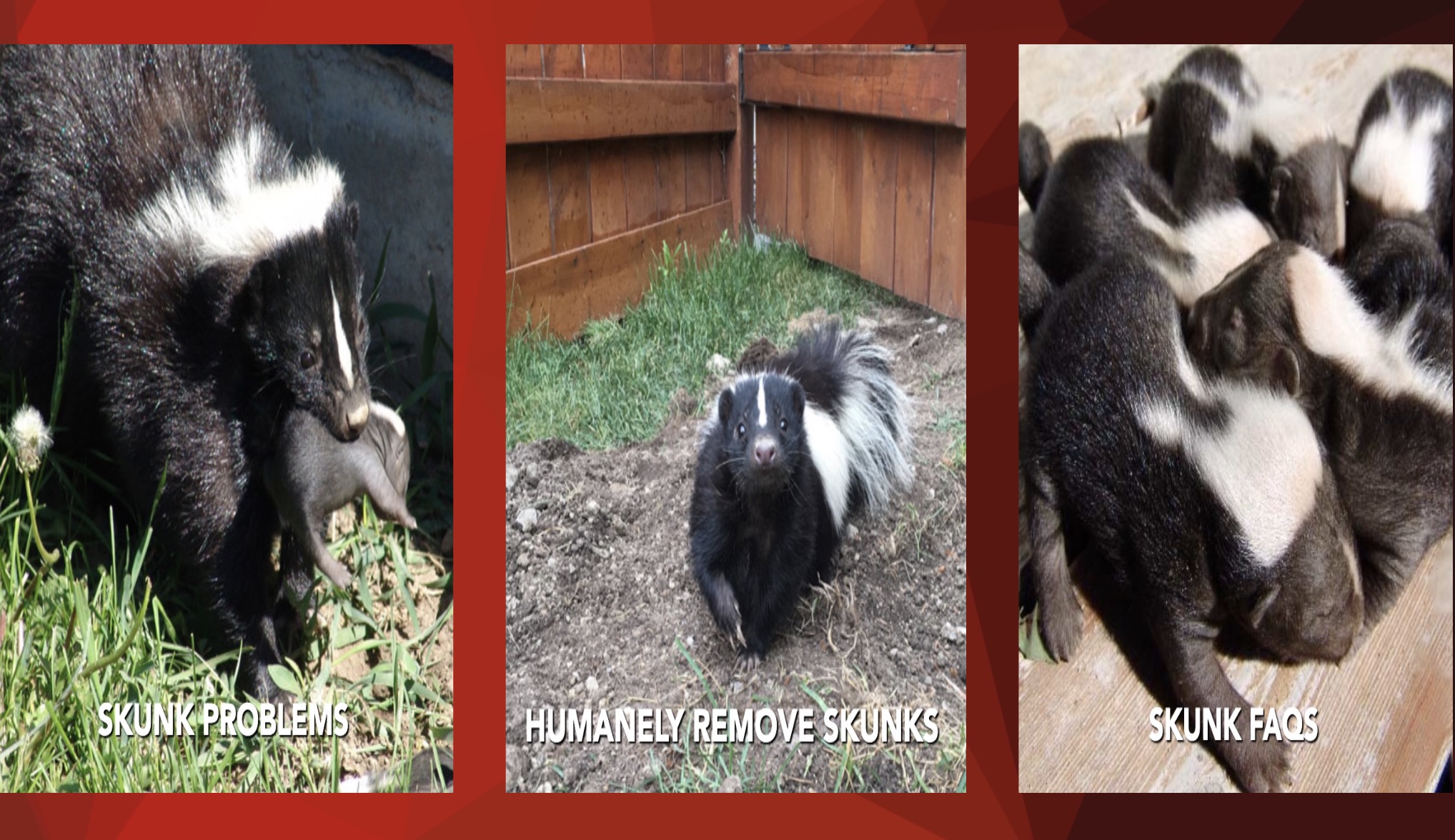SAN ANGELO, TX — San Angelo LIVE! has received reports that skunk problems are on the rise. A representative from MDK Services, a pest control company in San Angelo, reported increased requests for skunk removal by Concho Valley residents. There seems to be an influx of skunks stinking up our city this year, and nobody seems to know why.
A San Angelo LIVE! reporter called three different agencies in search of answers or even clues as to why the city had a skunk infestation. Texas Parks and Wildlife connected a reporter to three different departments and finally ended with an answering machine for the media department. Next, we called Bug Express, and they said, "We don't deal with wildlife removal, so we don't have an answer as to why skunks are on the rise or how many resident complaints we've received." Finally, we contacted the Texas A&M Ag Extension Service, and again, we were left speaking to an answering machine.
The pungent odor of a skunk is something everyone can recognize, a scent that lingers in the air for days and poses a considerable challenge to remove. While the notorious smell is a well-known characteristic of skunks, these creatures also present other issues, such as structural damage to buildings, potential transmission of rabies, and the challenges of wildlife removal.

Skunk Problems
(Credit: AAA Wildlife Control Website)
Skunks are renowned for their ability to emit a foul-smelling spray when injured, frightened, or during mating. This odor, which can persist for days, is not the only concern when it comes to dealing with skunks. Skunks are natural burrowers, and in urban settings, they often seek refuge underneath decks, sheds, porches, and houses. Once settled, they create bowl-shaped depressions lined with grass and leaves, causing potential structural weaknesses in these areas.
Skunks are active between January and mid-March, with females displaying a unique reproductive strategy. They can store male sperm separately from their eggs, delaying pregnancy until favorable weather conditions prevail. The gestation period is approximately 63 days, and females typically give birth to litters ranging from 4 to 6 offspring, although this number can vary between 1 and 9.
As nocturnal creatures, skunks venture out in the evenings foraging for food. Skunks are omnivores, consuming a varied diet that includes plants, veggies, fruits, insects, grubs, small animals, and eggs. They are also known to raid accessible garbage cans for any leftovers.
Skunk Facts:
- Skunks can spray their scent glands up to 15 feet.
- The skunk smell can linger on the skin and pet hair for extended periods, ranging from days to even months.
- Skunks have poor eyesight, and their awareness of their surroundings is limited.
- Skunk burrows can lead to structural weaknesses in decks, porches, sheds, and foundations.
- Skunks can carry rabies without displaying obvious signs of infection.
Dealing with Skunk Infestations:
Removing skunks from residential areas can be a challenging and potentially dangerous task. Leaving skunk removal to experienced and trained professionals who understand the risks involved is advised. DIY attempts at skunk removal have resulted in serious injuries, with individuals falling off ladders and roofs. There have also been cases where well-intentioned individuals inadvertently startled aggressive mother skunks, prompting defensive attacks to protect their young.
In conclusion, while the unmistakable scent of a skunk is a well-known phenomenon, it is crucial to recognize the broader challenges associated with these creatures. Seeking professional assistance for skunk removal ensures both the safety of individuals and the ethical treatment of wildlife in urban environments. Understanding skunk behavior and habits is the first step toward finding harmonious solutions for coexisting with these unique and sometimes challenging neighbors.
Subscribe to the LIVE! Daily
Required






Comments
Listed By: Mike Henderson
Easy enough to figure out ... you think all of those feral cats/dogs getting food left out for them are the only animals that eat said food?
Coons, skunks, possums, foxes, ringtails, and other wildlife love the handouts.
- Log in or register to post comments
PermalinkPost a comment to this article here: